Legal Update, August 2021
Uniform Grants Guidance Procurement Standards: More Than Just Finding a Good Bargain
by Elizabeth “Issie” Karan
When buying goods or materials, Hemophilia Treatment Centers (HTCs) may not first think to check federal regulations for grantees. However, the Uniform Grants Guidance (UGG) contains requirements for procurements conducted by federal grantees. These requirements were changed significantly when the UGG was updated in 2014. After the revised UGG went into effect, the government gave grantees a grace period to implement the new procurement standards. However, that grace period ended. The Hemophilia Alliance recommends reviewing internal policies and procedures related to procurement to ensure they comply with the UGG’s standards. Below we summarize major components of the standards but also are available to answer any questions HTCs might have.
As often is the case with compliance, the UGG focuses on the content, maintenance, and execution of written policies and procedures (P&Ps) for procurement. Generally, any procurement process must provide for full and open competition. The P&Ps must incorporate the procurement methods described in the UGG and outlined below. For every procurement action involving purchases in excess of the simplified acquisition threshold ($250,000), the UGG requires that a cost or price analysis be performed and documented. The UGG requires that federal grantees take necessary affirmative steps to assure that minority businesses, women’s business enterprises, and labor surplus area firms are used when possible. Finally, the organization must maintain written standards of conduct covering internal and external conflicts of interest.
The UGG identifies five methods for procurement depending on the type of project and dollar amount.
| Methodology | Dollar Threshold | Requirements |
|---|---|---|
| Micro-purchase | Not to exceed micro-purchase threshold: $0 – $10,000 |
|
| Small purchase procedure | Greater than micro-purchase, not to exceed the simplified acquisition threshold: $10,001 – $250,000 |
|
| Sealed bid | Greater than the simplified acquisition threshold: $250,001 and greater |
|
| Competitive proposal | Greater than the simplified acquisition threshold: $250,001 and greater |
|
| Noncompetitive proposal (sole source) | Greater than micro-purchase threshold: $10,000 and greater |
|
Also in this Issue…
Notes from Joe
· Washington Update
Washington Update
· Drug Pricing Update
Payer Update
· Working with the Payer Team and Hemophilia Alliance Network Services (HANS) a 2021 Case Study
Alliance Update
· Harmony in Hemophilia – HTC Wall of Walkers Unite Walk Challenge Update
· Update on New Member Meeting

Comments are closed.